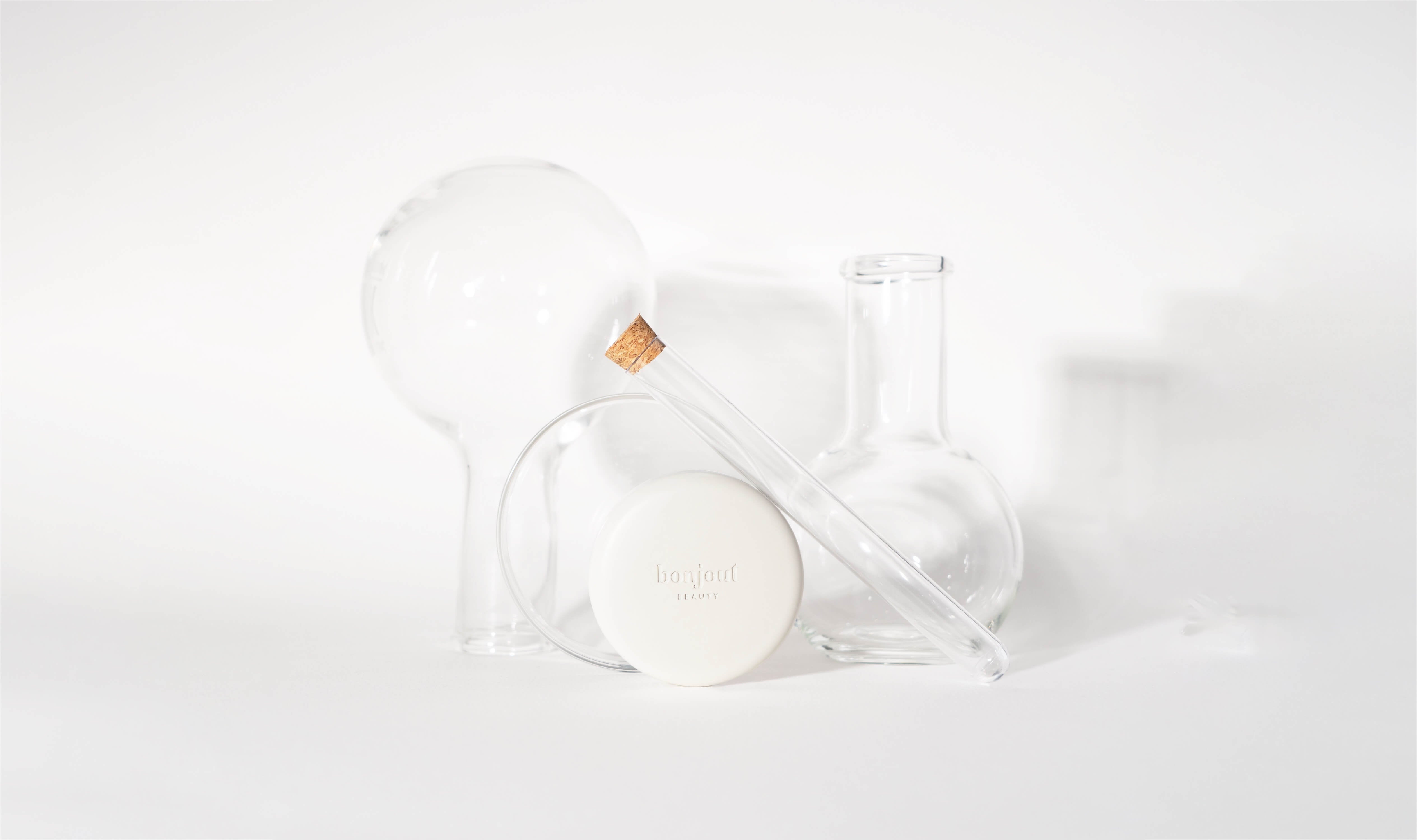Hyaluronic Acid in French Dermatology
As a dermatologist practicing for over fifteen years within the French healthcare system, I have witnessed the remarkable evolution of hyaluronic acid (HA) in our therapeutic arsenal. What was once primarily used in aesthetic medicine has transformed into a fundamental ingredient in both preventive and corrective dermatology. Allow me to share my clinical expertise on this fascinating molecule.
Wait, It's Just Sugar?
Hyaluronic acid (HA) is a naturally occurring molecule found abundantly in your skin. It's a glycosaminoglycan—a sugar molecule—that acts like a "molecular sponge," capable of holding up to 1,000 times its weight in water. Your skin naturally contains about half of your body's total hyaluronic acid supply, making it a fundamental component of healthy skin structure.
The standout feature of HA in skincare is its exceptional ability to attract and retain moisture in the skin. This helps restore the skin's barrier function and reduces transepidermal water loss, making it particularly effective for dry or dehydrated skin. Beyond hydration, HA offers significant anti-aging benefits. Since our natural HA production decreases with age, topical application helps counteract this decline by improving skin elasticity, suppleness, and overall appearance—particularly beneficial during hormonal changes like menopause. Additionally, it has anti-inflammatory effects that can help calm irritated skin and reduce redness, making it suitable for sensitive skin types and conditions like mild atopic dermatitis. It also supports better quality healing after dermatological procedures or skin injuries by promoting tissue repair.
An important consideration when choosing HA products is molecular weight. High molecular weight HA creates a film on the skin's surface for immediate hydration and is ideal for very dry skin, while low molecular weight HA penetrates deeper to stimulate your skin's own HA production. Many quality formulations combine different molecular weights for maximum benefit. For optimal results, apply HA to slightly damp skin and follow with a moisturizer to seal in the hydration. Start with lower concentrations to test tolerance and layer products from thinnest to thickest consistency. HA works particularly well with other active ingredients like vitamin C for morning antioxidant protection, retinoids (where HA helps counteract dryness), and niacinamide for oily or combination skin.
HA is remarkably well-tolerated by most skin types, with side effects from topical use being rare. Some people with compromised skin barriers may experience mild irritation, especially when using multiple active ingredients simultaneously, but overall it maintains an excellent safety profile. This versatility and effectiveness make hyaluronic acid one of the most valuable ingredients in modern skincare, suitable for virtually all skin types and concerns—from treating dryness to preventing signs of aging while supporting the skin's natural barrier function.
My years of clinical experience have allowed me to identify several remarkable therapeutic properties:
In my daily practice, I often explain to my patients that HA acts like a "molecular sponge" capable of retaining up to 1,000 times its weight in water. This exceptional hygroscopic property makes it an active ingredient of choice in treating dermatoses related to cutaneous dehydration.
In France, we are fortunate to have strict regulations concerning cosmetic and dermocosmetic products. Here are my recommendations based on clinical experience:
Concentrated Serums
- Vichy Minéral 89: Particularly suited for sensitive skin, its minimalist formulation corresponds to our French approach favoring efficacy without superfluity.
- Clarins Double Serum: Its dual oil/water phase respects the cutaneous physiology that we privilege in French dermatology.
- Revision Skincare Hydrating Serum: Demonstrates excellent clinical tolerance in my practice, particularly for patients with compromised barrier function.
After years of clinical practice, I consider hyaluronic acid an essential component of modern dermatological care. Its versatility, from medical dermatology to aesthetic applications, combined with its excellent safety profile, makes it indispensable in our therapeutic approach.
The French tradition of evidence-based dermatology, combined with our emphasis on skin barrier physiology, has allowed us to optimize HA utilization. Whether treating xerosis, supporting post-procedure healing, or preventing cutaneous aging, HA represents a cornerstone of contemporary dermatological practice.
As we continue to advance our understanding of cutaneous biology, I am confident that hyaluronic acid will remain central to our therapeutic strategies, evolving with new delivery systems and combination therapies that respect the fundamental principles of French dermatology: efficacy, tolerance, and physiological respect for cutaneous function.
📚 Continue Reading

"Hyaluronic Acid 101"
Hyaluronic Acid in Dermatology

The Desert’s Best-Kept Beauty Secret: Prickly Pear Cells in Skincare
Bonjout Beauty's article highlights the benefits of prickly pear cactus native cells for skin, emphasizing their antioxidant and regenerative properties to combat aging and improve skin health.

Shea Butter: The Cozy Blanket Your Skin’s Been Begging For
Shea butter, a natural fat extracted from the shea tree nut, offers various cosmetic and medicinal benefits due to its rich fatty acid and vitamin content, including moisturizing, anti-inflammatory, and wound-healing properties.

